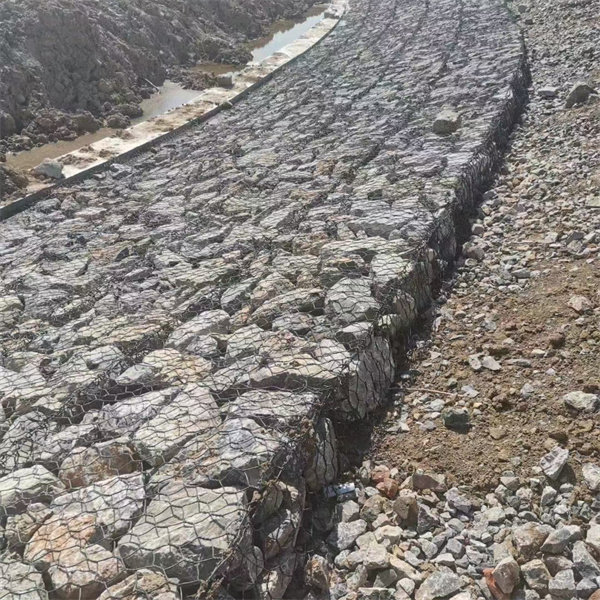Ago . 12, 2024 14:26 Back to list
How to Choose the Best Suppliers for Your Gabion Wall Construction Project
Building a Gabion Wall A Comprehensive Guide for Suppliers
Gabion walls have gained considerable popularity in landscape architecture and civil engineering due to their stability, durability, and aesthetic flexibility. These structures are essentially wire mesh cages filled with rocks, stones, or other materials, making them an attractive option for both functional and decorative applications. For suppliers looking to tap into this growing market, understanding the intricacies of gabion wall construction is essential.
The Basics of Gabion Walls
Gabion walls are primarily used for erosion control, slope stabilization, and various landscaping applications. They can absorb water, allowing for natural drainage, and they blend seamlessly into natural environments, making them suitable for rural and urban settings alike. The modular nature of gabions allows for easy customization, enabling suppliers to cater to diverse client needs.
Materials Needed
To build a gabion wall, several key components are required
1. Gabion Baskets These are typically made from galvanized or PVC-coated wire to prevent rusting and corrosion. Suppliers should be prepared to offer various sizes and shapes to accommodate different installation sites.
2. Filling Material The fill can include stones, gravel, or even recycled materials, depending on the intended use and aesthetic preference. Suppliers should consider sourcing locally available materials to reduce costs and transport emissions.
3. Tools Basic tools needed for construction include gloves, pliers, and perhaps a small crane or hoist, especially for larger projects. Suppliers can provide a comprehensive toolkit or even offer rental options for specific equipment.
Design Considerations
When creating gabion walls, the design plays a crucial role in their effectiveness and visual appeal. Suppliers should work closely with architects and contractors to determine specific requirements based on the wall's intended purpose. Factors to consider include wall height, width, and the type of fill material. Additionally, it is essential to ensure proper drainage behind the wall to prevent water buildup that could lead to structural failures.
Installation Process
building a gabion wall suppliers

The installation of a gabion wall generally involves the following steps
1. Site Preparation Clear the area where the wall will be built and level the ground to ensure stability.
2. Foundation A solid foundation is critical for the longevity of the wall. Depending on the height and use of the wall, some suppliers might recommend a concrete base.
3. Assembly of Gabion Baskets Place the gabion baskets in position and secure them according to the design specifications. It's important to ensure that they are tightly packed and aligned.
4. Filling the Baskets Begin filling the baskets with the chosen materials. For aesthetic purposes, it might be advisable to use larger stones on the exterior for a more appealing look.
5. Capping the Wall Once the baskets are filled, some installations may require capping them off with additional wire mesh or stones to secure the fill and enhance the structure's integrity.
Market Trends and Opportunities
As urbanization continues, the demand for sustainable construction solutions is on the rise. Gabion walls offer an environmentally friendly method of combining functionality with nature, as they often utilize locally sourced materials and promote biodiversity. By positioning themselves as providers of eco-friendly products and services, suppliers can appeal to a broader audience.
Moreover, suppliers can explore opportunities for custom-designed gabion structures for unique projects, such as artistic installations, garden features, and functional walls that enhance property values. Offering consultancy services alongside products could also add value for customers, ensuring that they not only buy materials but also receive guidance on optimal designs and installation techniques.
Conclusion
Gabion walls are not just a trend; they represent a sustainable approach to modern construction challenges. For suppliers, understanding the fundamentals of gabion wall design, materials, and installation offers a pathway to success in a competitive market. By focusing on quality, customization, and environmentally friendly solutions, suppliers can build a solid reputation and capitalize on the growing interest in gabion walls.
-
Wire Mesh Thickness Impact on Gabion Wall Load Bearing
NewsAug.12,2025
-
Ultimate Guide to Hexagonal Gabion Box
NewsAug.12,2025
-
Types of Rocks for Gabion Baskets Durability and Aesthetics
NewsAug.12,2025
-
Standard Gabion Box Sizes and Their Industrial Applications
NewsAug.12,2025
-
Easy Guide to Building Garden Gabion Cages at Home
NewsAug.12,2025
-
Drainage Solutions for Gabion Mesh Structures
NewsAug.12,2025
-
Visualizing Gabion 3D Integration in Urban Landscapes with Rendering
NewsJul.23,2025






